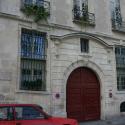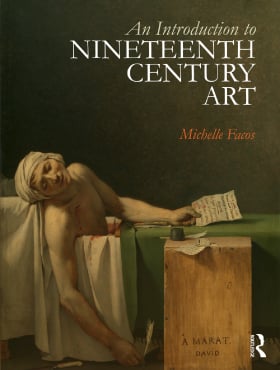Anderson, Wayne V.Cézanne and the Eternal Feminine. Cambridge and New York: Cambridge University Press, 2004
Paul Cézanne
Died: Aix-en-Provence, 23 October 1906
Nationality: French
bourgeois, son of a banker
Ecole Saint-Joseph (1849-52, Aix); Collège Bourbon (1852-58, Aix); with Joseph Gibert at Ecole Municipale de Dessin (Municipal Design School, 1857-61, Aix); Académie Suisse (1861, Paris)
1861 – moves to Paris; meets Camille Pissaro; returns to Provence
1862 – returns to Paris; rejected by Ecole des Beaux-Arts
1863 – exhibits at Salon des Refusés; Cézanne sends paintings to the Salon regularly, but is consistently rejected
1872 – moves to Pontoise and stays with Impressionism collector Dr. Paul Gachet; meets Vincent van Gogh
1874 – participates in First Impressionist Exhibition
1877 – participates in Third Impressionist Exhibition
1886 – marries longtime mistress, Hortense Fiquet; father dies, leaving Cézanne a large inheritance; friendship with Emile Zola ends
1889 – exhibits with Les XX (Brussels)
1895 – first one-man show at Ambroise Vollard’s gallery (Paris)
1899 – exhibits at Salon des Indépendents (Paris); also in 1901 and 1902
1900 – exhibits at Exposition universelle (Paris)
1901 – exhibits at La Libre Esthétique (Brussels); also in 1904
1903 – exhibits at Vienna Secession
1904 – exhibits at Salon d’Autumne; also in 1905 and 1906
Travels
regular travel between Aix and Paris; L’Estaque (1870; 1878-79; 1883-85); Paris (1871); Pontoise (1872); Switzerland (1890)
Portrait of Achille Emperaire, 1867-68 (Musée d’Orsay, Paris)
House of the Hanged Man, Auvers-sur-Oise, 1873 (Musée d’Orsay, Paris)
Self-Portrait, 1883-85 (Carnegie Museum of Art, Pittsburgh)
Mont Sainte-Victoire with Large Pine, 1887 (Courtauld Institute, London)
The Card Players, 1890-92 (Metropolitan Museum of Art, New York)
Documentation:
In a conversation with his younger colleague Emile Bernard, Cézanne declared:
“There are two things in the painter: the eye and the mind. Each of them should aid the other. It is necessary to work at their mutual development, in the eye by looking at nature, in the mind by the logic of organized sensations which provides the means of expression."
Cited in Matthew Simms, “Cézanne’s Unfinish,” RES: Anthropology and Aesthetics, no. 36 (Autumn 1999): 229.
Maurice Denis observed:
“All [Cézanne’s] faculty for abstraction – and we see how far the painter dominates the theorist – all his faculty for abstraction permits him to distinguish only among notable forms ‘the sphere, the cone and the cylinder.’ All forms are referred to those which he is along capable of thinking. The multiplicity of his color schemes varies them infinitely. But still he never reaches the conception of the circle, the triangle, the parallelogram; those are abstractions which his eye and brain refuse to admit. Forms are for him volumes. Hence all objects were bound to tell for him according to their relief, and to be situated according to places at different distances from the spectator within the supposed depth of the picture. A new antimony, this, which threatens to render highly accidental ‘that plane surface covered with colors arranged in a determined order,’ Colorist before everything, as he was, Cézanne resolves this antimony by chromatism – the transposition, that is, of values of black and white into values of color.”
“Volume finds, then, its expression in Cézanne in a gamut of tints, a series of touches; these touches follow one another by contrast or analogy according as the form is interrupted or continuous. This was what he was fond of calling modulating instead of modeling. We know the result of this system, at once shimmering and forcible; I will not attempt to describe the richness of harmony and the gaiety of illumination of his pictures. It is like silk, like mother-of-pearl and like velvet. Each modulated object manifests its contour by the greater or less exaltation of its color. If t is in shadow its color shares the tints of the background. This background is a tissue of tints sacrificed to the principal motive which they accompany. But on any and every pretext the same process recurs of chromatic scales where the colors contrast and interweave in tones and half-tones. The whole canvas is a tapestry where each color plays separately and yet at the same time fuses its sonority in the total effect. The characteristic aspect of Cézanne’s pictures comes from this juxtaposition, from this mosaic of separate and slightly fused tones. ‘Painting,’ he used to say, ‘is the registration of one’s colored sensations...’”
Maurice Denis, “Cézanne – II,” The Burlington Magazine for Connoisseurs, vol. 16, no. 83 (February 1910): 276 & 279
Art critic Gustave Geffroy appreciated the apparent lack of finish in Cézanne’s paintings:
“It has been noted that some of Cézanne’s paintings are not finished. What does that matter if they express the beauty and harmony that he has felt so deeply? Who can say at what precise moment a canvas is finished? Art always contains an element of unfinish [inachèvement] for the life that it reproduces is in constant transformation.”
Gustave Geffroy, “Salon de 1901,” La Vie artistique huitième série (Paris: Dentu, 1903), 376; cited in Matthew Simms, “Cézanne’s Unfinish,” RES: Anthropology and Aesthetics, no. 36 (Autumn 1999): 226.
Matthew Simms comments on “unfinish” in Cézanne’s paintings:
“The phenomenon of unfinish is one of the most startling and challenging aspects of Paul Cézanne’s paintings. From the outset, critics and scholars attempting to grapple with the significance of Cézanne’s art have singled out the unfinished character of much of his mature and late work as one of the most, if not the most, distinctive components of his modernity. In 1901 the critic Gustave Geffroy defended Cézanne from detractors who used the lack of a conventional quality of finish in his work to dismiss it as inept: It has been noted that some of Cézanne’s paintings are not finished. What does that matter if they express the beauty and harmony that he has felt so deeply? Who can say at what precise moment a canvas is finished? Art always contains an element of unfinish (inachèvement) for the life that it reproduces is in constant transformation.”
Matthew Simms, “Cézanne’s Unfinish,” RES: Anthropology and Aesthetics, no. 36 (Autumn 1999): 226.
William Carlos Williams wrote a poem about Cézanne in 1964
Dealers/Collectors
Ambroise Vollard, Paul Durand-Ruel


 Buy the Book
Buy the Book